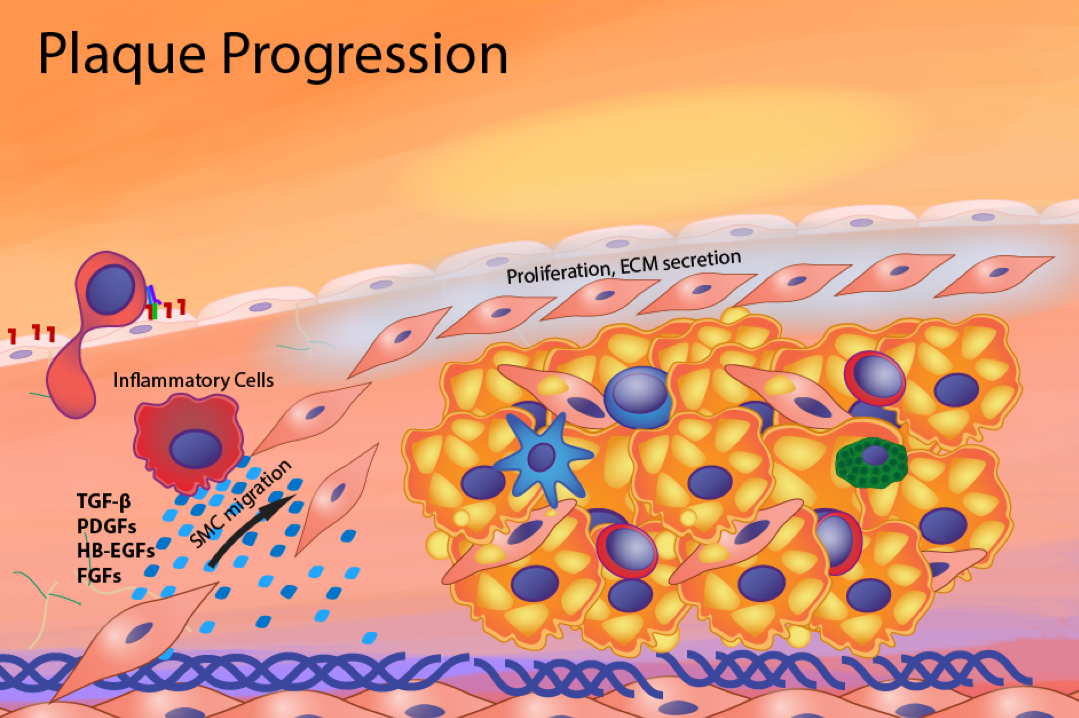
Figure 3. Progression of the atherosclerotic plaque. Macrophage foam cell and endothelial cell inflammatory signaling continues to promote the recruitment of more monocytes and immune cells into the subendothelial space. Transition from a fatty streak to a fibrous fatty lesion occurs with the infiltration and proliferation of tunica media smooth muscle cells. Macrophage foam cells and other inflammatory cells produce a number of chemoattractant and proliferation factors, including transforming growth factor-β (TGF-β), platelet-derived growth factor (PDGF) isoforms, matrix metalloproteinases, fibroblast growth factors (FGF), and heparin-binding epidermal growth factor (HB-EGF). Smooth muscle cells are recruited to the luminal side of the lesion to proliferate and generate an extracellular matrix network to form a barrier between lesional prothrombotic factors and blood platelets and procoagulant factors. A subset of smooth muscle cells express macrophage receptors and internalize lipoproteins to become foam cells. Fibrous fatty lesions are less likely to regress than fatty streaks.
